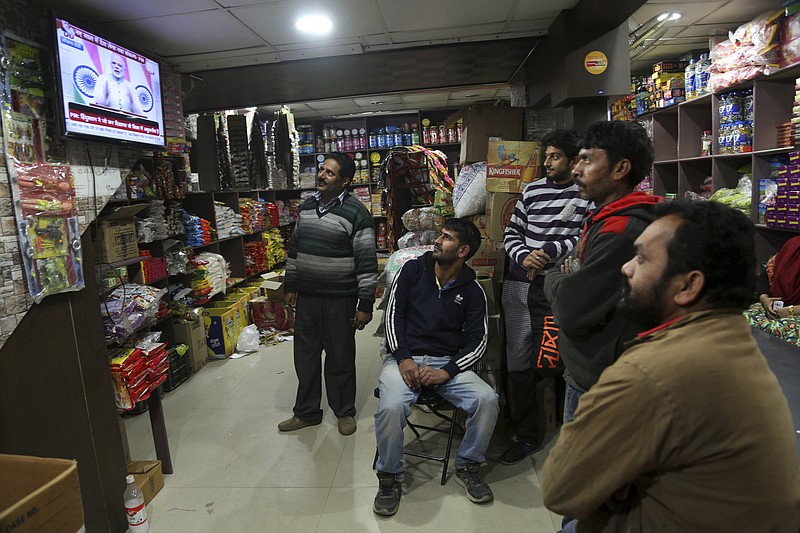NEW DELHI (AP) - Indian Prime Minister Narendra Modi defended his government's decision to demonetize the country's highest-value currency bills last month in an unusual New Year's Eve message to the nation Saturday.
Modi called India's massive demonetization drive, which withdrew 86 percent of the country's currency bills from the system, "a historic purification ritual" to cleanse the system of tax evasion and corruption.
"This will play an important role in changing the direction of the nation in times to come," he said in the speech, which was televised live.
In an announcement that caught the country by surprise on Nov. 8, Modi said in a similar address to the nation that India was withdrawing 500- and 1,000-rupee bills as legal tender in order to crack down on the country's massive amounts of "black money," or untaxed wealth.
The deadline for exchanging or depositing the old currency in bank accounts passed Friday.
When the government announced its demonetization plans, it also announced a cap on the amount of money people could withdraw from ATMs and bank accounts, while the central bank printed new currency bills to fill the gap created by the erasure of a majority of the country's notes.
At that time, Modi said that by Dec. 30, normalcy was likely to return. However, on Friday, the Reserve Bank of India announced that that it would continue to control how much money people can withdraw from ATMs and banks for now.
According to a statement from the central bank, the daily limit on ATM withdrawals will go up to 4,500 rupees ($66) from 2,500 ($37) rupees, but the weekly cap on withdrawals from bank accounts will remain at 24,000 rupees Saturday onward. It wasn't clear how long the limits would be in place.
Since the announcement that the old high-value bills were no longer legal tender, banks and ATMs have seen massive lines of people. It's not unusual for ATMs to not be refilled for days and for banks to run out of cash within a few hours of opening.
A majority of Indians earn and spend in cash, either due to habit or because they're too poor to have access to banks.
Experts say only about 40 percent of the country's ATMs are equipped to start giving out the new 2,000- and 500-rupee bills.
In his speech Saturday, Modi said that his government hopes that banks will get back to normal business as soon as possible, but gave no deadline for that.
Modi lauded the nation for "bearing with the inconveniences with extreme patience."
